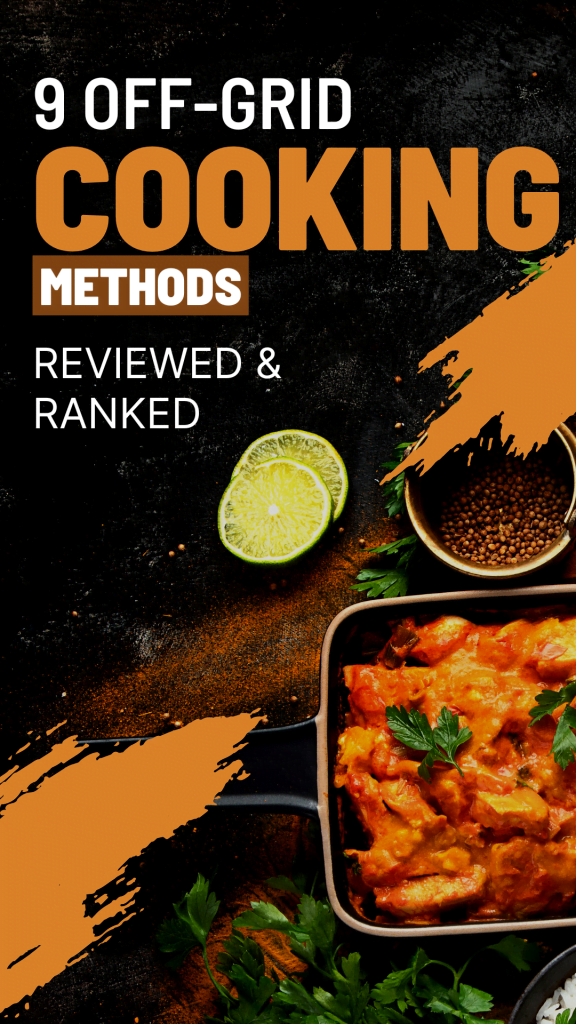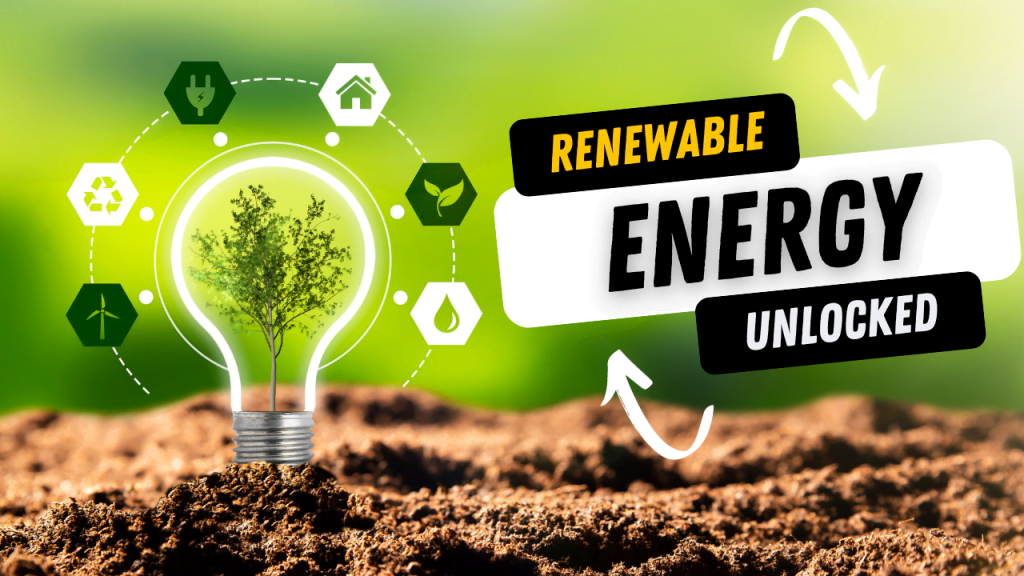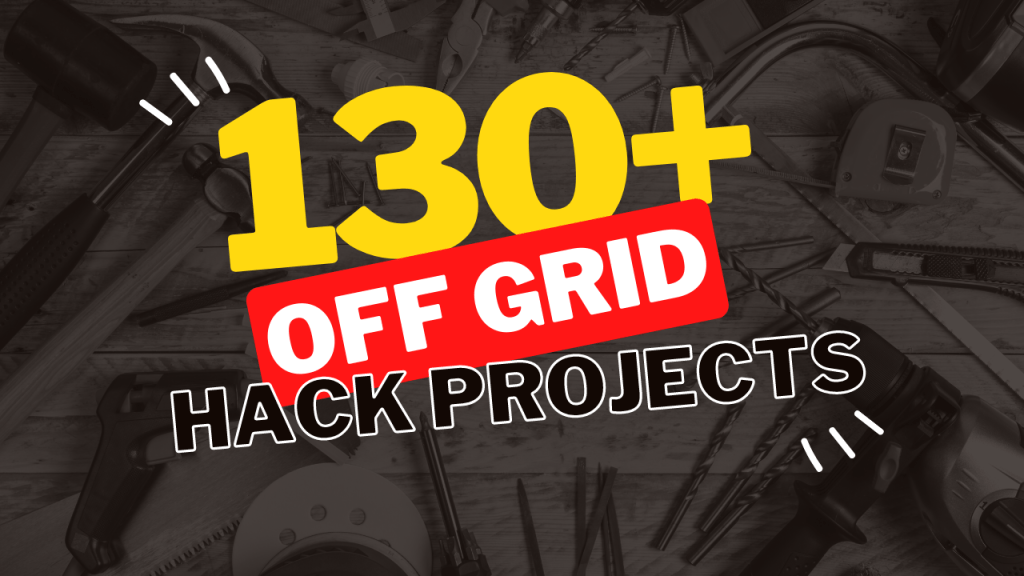If you’re looking for the ultimate off-grid cooking experience, you’ve come to the right place! I’m excited to share my top 9 off-grid cooking methods with you. We’ll compare these methods based on cost, ease, time, quality of food, and food choice. So, let’s dive in and explore the world of outdoor cooking!
Rating Off-Grid Cooking Methods: How We Do It
Our unique rating system uses a scale of 1 to 5 for each criterion, making it easy to find the perfect off-grid cooking method for your needs. Here’s a quick breakdown of our rating system:
- Cost: Initial investment and ongoing expenses (1 = most expensive, 5 = least expensive)
- Ease: Setup, usage, and maintenance difficulty (1 = challenging, 5 = easy)
- Time: Average cooking time per meal (1 = slowest, 5 = quickest)
- Quality of food: Taste, texture, and overall quality (1 = lowest, 5 = highest)
- Food choice: Versatility and variety of dishes (1 = limited, 5 = wide range)
Armed with this information, let’s kick off our adventure into the amazing world of off-grid cooking methods!

1. Solar Cooking: Catch Some Rays While You Cook
Solar cooking is a fantastic, eco-friendly option for off-grid enthusiasts. Harnessing the power of the sun, solar cookers come in a variety of styles, including parabolic cookers, solar ovens, and solar panel cookers. Let’s dive deeper into solar cooking and rate it based on our criteria.
How Solar Cooking Works
Solar cookers use reflective surfaces to concentrate sunlight onto a cooking area, generating heat to cook food. They can reach temperatures of up to 400°F (200°C), allowing you to cook a wide variety of dishes. However, the efficiency of solar cooking is weather-dependent; you’ll achieve the best results on clear, sunny days.
Ratings for Solar Cooking
- Cost: 3 – Solar cookers range in price, with some DIY options available. There are no ongoing fuel costs, making it affordable in the long run.
- Ease: 4 – Setting up and using a solar cooker is relatively simple, but you’ll need to adjust its position periodically to maintain optimal sunlight exposure.
- Time: 2 – Solar cooking takes longer than traditional methods, especially on cloudy days or in colder climates.
- Quality of food: 4 – The gentle, even heat produced by solar cookers allows for delicious, tender, and moist dishes.
- Food choice: 2 – Solar cookers are versatile but may not be suitable for all types of dishes, particularly those requiring high heat or quick cooking times. Some examples of meals you can cook with solar cookers include baked vegetables, slow-cooked stews, and even cakes and bread.
Score: 15/25
Solar cooking is an environmentally friendly and cost-effective off-grid cooking method. It’s perfect for those who enjoy a leisurely cooking experience and don’t mind being dependent on the weather. With a total score of 15 out of 25, solar cooking is an excellent option for those seeking a sustainable and unique way to prepare their meals.
2. Wood-Fired Cooking: Old-School Charm with a Smoky Twist
Wood-fired cooking is a traditional method that brings the outdoors to your plate. Using firewood or charcoal, you can prepare a variety of dishes with that unmistakable smoky flavour. This method does take time and attention but delivers mouth-watering results. Let’s explore wood-fired cooking and rate it based on our criteria.
How Wood-Fired Cooking Works
Wood-fired cooking involves using firewood or charcoal to produce heat in outdoor stoves, grills, or even open fire pits. You can cook directly over the flames or use the heat from the coals. This method requires constant tending to the fire and monitoring of the cooking process to avoid burning or undercooking the food.
Ratings for Wood-Fired Cooking
- Cost: 3 – Wood and charcoal can be inexpensive, especially if you have access to a local source. However, ongoing fuel costs and potential equipment costs should be considered.
- Ease: 2 – Lighting and maintaining the fire takes skill and practice. Cooking over wood fire requires constant attention and can be affected by weather conditions.
- Time: 3 – Wood-fired cooking can be time-consuming due to fire preparation and the need to monitor the cooking process closely.
- Quality of food: 5 – The unique smoky flavour and perfectly cooked food make wood-fired cooking worth the effort. It adds an extra dimension to the taste that’s hard to beat.
- Food choice: 4 – Wood-fired cooking offers versatility in the dishes you can prepare, including grilled meats, roasted vegetables, smoked fish, and even wood-fired pizza. However, it might not be suitable for delicate dishes that require precise temperature control.
Score: 17/25
Wood-fired cooking offers a nostalgic and flavourful off-grid cooking experience. It’s an excellent option for those who love the outdoors and don’t mind putting in the effort to achieve that perfect smoky flavour. With a total score of 17 out of 25, wood-fired cooking is an ideal choice for those seeking a rustic and authentic cooking method.
3. Dutch Oven Cooking: Versatile, One-Pot Wonder for the Outdoors
Dutch oven cooking is a popular off-grid cooking method that combines convenience and versatility. Using a cast iron or aluminium pot with a tight-fitting lid, you can cook a wide variety of dishes over an open fire or coals. Let’s dive into the world of Dutch oven cooking and rate it based on our criteria.
How Dutch Oven Cooking Works
A Dutch oven is a thick-walled pot that retains and distributes heat evenly, making it perfect for baking, roasting, and stewing. You can place the Dutch oven directly over the fire, or you can put hot coals on top and beneath it to create a more even heat. This method requires monitoring the temperature and adjusting the coals as needed for optimal cooking results.
Ratings for Dutch Oven Cooking
- Cost: 3 – Dutch ovens can be a moderate investment, but their durability and versatility make them worth the cost. There are no additional fuel costs beyond what you use for your heat source.
- Ease: 4 – Dutch ovens are easy to use, but they require some practice to master temperature control and cooking times. The heavy pot can also be challenging to handle when hot.
- Time: 3 – Cooking times with a Dutch oven can vary depending on the dish and heat source. Some recipes may require longer cooking times compared to conventional methods.
- Quality of food: 5 – Dutch ovens produce evenly cooked, tender, and flavourful dishes thanks to their excellent heat retention and distribution.
- Food choice: 5 – The Dutch oven’s versatility allows you to cook an extensive range of dishes, from soups and stews to bread, casseroles, and even desserts.
Score: 20/25
In conclusion, Dutch oven cooking is an excellent off-grid cooking method that offers both convenience and versatility. It’s perfect for those who love experimenting with different dishes and enjoy slow-cooked, tender meals. With a total score of 20 out of 25, Dutch oven cooking is a top choice for outdoor cooks seeking a dependable and adaptable cooking method.
4. Rocket Stoves: Efficient, High-Temperature Cooking with Minimal Fuel
Rocket stoves are an innovative off-grid cooking method that boasts fuel efficiency and high heat output. Designed with a vertical combustion chamber and insulated chimney, these stoves can reach high temperatures with minimal fuel. Let’s explore rocket stove cooking and rate it based on our criteria.
How Rocket Stove Cooking Works
A rocket stove features a simple design with an L-shaped combustion chamber where small sticks, twigs, or other biomass fuels are burned. The insulated chimney ensures complete combustion, producing intense heat with minimal smoke. The stove’s design directs the heat towards the cooking surface, allowing for quick and efficient cooking.
Ratings for Rocket Stove Cooking
- Cost: 4 – Rocket stoves can be relatively inexpensive, especially if you build one yourself. There are also affordable commercial options available. The low fuel requirements make ongoing costs minimal.
- Ease: 4 – Rocket stoves are easy to use and maintain. The only challenge might be finding suitable fuel, but small sticks and twigs should suffice in most cases.
- Time: 4 – The high heat output of rocket stoves allows for quick cooking times, although you’ll need to keep an eye on your food to avoid burning.
- Quality of food: 4 – Rocket stoves produce evenly cooked and flavourful dishes, but the high heat may not be suitable for all types of meals, such as slow-cooked stews.
- Food choice: 3 – Rocket stoves work well for frying, boiling, and grilling, but they may not be ideal for slow cooking or baking. You can cook dishes like stir-fries, grilled meats, and quick-cooking vegetables.
Score: 19/25
Rocket stove cooking is an efficient and eco-friendly off-grid cooking method. It’s perfect for those who need a compact, high-temperature heat source with minimal fuel requirements. With a total score of 19 out of 25, rocket stoves are a fantastic choice for outdoor enthusiasts seeking a fast and efficient cooking method.
5. Campfire Cooking: Nothing Beats a Classic
There’s nothing quite like campfire cooking. It’s the classic off-grid cooking method that brings people together, sharing stories and laughter around a warm fire. Whether you’re using a grill grate, skewers, or foil-wrapped food, campfire cooking provides a fun and rustic experience. Let’s dive into campfire cooking and rate it based on our criteria.
How Campfire Cooking Works
With campfire cooking, you prepare food over an open fire or use the heat from the coals. You can cook on a grill grate, in a cast-iron skillet, or with skewers. You can even wrap food in foil and cook it directly on the coals. Keep in mind that tending the fire, controlling the heat, and watching the cooking process are key to success.
Ratings for Campfire Cooking
- Cost: 5 – The equipment costs for campfire cooking are low, and fuel can often be found for free. Some campgrounds may charge for firewood, though.
- Ease: 2 – Building and maintaining a campfire takes practice, as does cooking over an open flame. Weather conditions, like wind, can also affect your cooking.
- Time: 3 – Campfire cooking takes time, from fire preparation to cooking. Cooking times can also vary depending on the dish and heat source.
- Quality of food: 4 – Campfire-cooked food has a unique, smoky flavour that’s hard to beat. However, heat control can be tricky, so watch out for uneven cooking or burnt food.
- Food choice: 3 – Campfire cooking is versatile but not suitable for all dishes, especially those needing precise temperature control. Popular options include grilled meats, roasted veggies, foil packets, and marshmallows for dessert.
Score: 17/25
So, if you’re looking for a timeless, atmospheric off-grid cooking experience, campfire cooking is the way to go. It’s perfect for outdoor lovers who appreciate gathering around a fire and sharing good times. With a total score of 17 out of 25, campfire cooking is a top choice for those seeking a traditional and heartwarming cooking method.
6. Propane Stoves: Portable and Convenient for Outdoor Adventures
Propane stoves are a popular and versatile off-grid cooking method. They offer the convenience of a traditional stovetop while you’re out in the great outdoors. From campgrounds to picnics, propane stoves provide a reliable and consistent heat source. Let’s examine propane stove cooking and rate it based on our criteria.
How Propane Stove Cooking Works
Propane stoves use portable propane canisters as fuel, providing a consistent flame for cooking. These stoves range from small, single-burner models to larger, multi-burner units with additional features. They’re easy to set up and provide excellent temperature control, making them a favourite for campers and outdoor enthusiasts.
Ratings for Propane Stove Cooking
- Cost: 3 – Propane stoves vary in price, but there are affordable options available. Keep in mind that you’ll need to purchase propane canisters regularly, adding to the ongoing costs.
- Ease: 5 – Propane stoves are user-friendly and require minimal setup. They offer excellent temperature control, making them easy to cook with in various outdoor settings.
- Time: 5 – Cooking times with propane stoves are similar to those of traditional stovetops, making them a time-efficient option for off-grid cooking.
- Quality of food: 4 – Propane stoves provide consistent heat, resulting in evenly cooked and delicious meals. However, they lack the smoky flavour that some other off-grid cooking methods offer.
- Food choice: 5 – Propane stoves are highly versatile, allowing you to cook a wide variety of dishes, from boiling water and frying eggs to simmering stews and sautéing vegetables.
Score: 22/25
Propane stove cooking is a practical and efficient off-grid cooking method. It’s perfect for those who want the familiarity of a stove top while enjoying outdoor adventures. With a total score of 22 out of 25, propane stoves are a top choice for those seeking portable, reliable, and versatile off-grid cooking methods.
7. BioLite Stoves: Innovative Cooking and Charging Solution
BioLite stoves are a cutting-edge off-grid cooking option that combines efficiency, eco-friendliness, and technology. These stoves not only provide a reliable heat source for cooking but also generate electricity to charge your devices. Let’s explore BioLite stove cooking and rate it based on our criteria.
How BioLite Stove Cooking Works
BioLite stoves use small sticks, twigs, or other biomass fuels for combustion. The innovative design captures waste heat and converts it into electricity, which can be used to charge devices like smartphones, cameras, or LED lights. The compact design makes BioLite stoves highly portable, perfect for camping or backpacking trips.
Ratings for BioLite Stove Cooking
- Cost: 3 – BioLite stoves can be pricey compared to other off-grid cooking options, but the added benefit of electricity generation may justify the investment for some users. Fuel costs are minimal, as you can use twigs and other small biomass materials.
- Ease: 4 – BioLite stoves are easy to use, but finding suitable fuel may be a challenge in some areas. The compact design and integrated charging capabilities make them a convenient choice for off-grid adventures.
- Time: 5 – Cooking times with BioLite stoves can vary depending on the fuel and heat output. Generally, they provide a quick and efficient cooking experience.
- Quality of food: 4 – BioLite stoves produce evenly cooked and flavourful dishes. However, they may not be suitable for all types of meals, such as slow-cooked stews or large roasts.
- Food choice: 4 – BioLite stoves work well for boiling, frying, and grilling but may not be ideal for slow cooking or baking. You can cook dishes like stir-fries, grilled meats, and quick-cooking vegetables.
Score: 20/25
BioLite stove cooking is an innovative and eco-friendly off-grid cooking method that offers the added benefit of electricity generation. It’s perfect for those who value both efficiency and sustainability in their outdoor cooking experiences. With a total score of 20 out of 25, BioLite stoves are a fantastic choice for tech-savvy outdoor enthusiasts seeking a versatile and environmentally friendly cooking method.
8. Earth Oven: Traditional and Natural Off-Grid Cooking
Earth ovens, also known as pit ovens, are a time-honoured off-grid cooking methods that utilises the earth’s natural heat retention properties. This technique has been used by various cultures throughout history, creating unique and delicious meals. Let’s delve into earth oven cooking and rate it based on our criteria.
How Earth Oven Cooking Works
Earth oven cooking involves digging a pit in the ground and lining it with stones or bricks. A fire is built in the pit, and the stones absorb the heat. Once the fire dies down, the food is placed on the hot stones, covered with leaves or cloth, and then buried with soil. The heat retained in the earth cooks the food slowly, resulting in tender and flavourful dishes.
Ratings for Earth Oven Cooking
- Cost: 5 – Earth oven cooking requires minimal investment, as you only need a shovel, stones or bricks, and firewood. Fuel costs can be minimal if you gather wood from your surroundings.
- Ease: 2 – Earth oven cooking takes skill and practice, especially in terms of building the pit, maintaining the fire, and determining the right cooking time.
- Time: 2 – Cooking with an earth oven is time-consuming, as it takes hours for the food to cook and requires constant monitoring of the fire and heat.
- Quality of food: 4 – Food cooked in an earth oven is tender and infused with the natural flavours of the earth and any added herbs or leaves. The slow cooking process ensures deep, rich flavours.
- Food choice: 3 – Earth ovens are best suited for slow-cooked dishes like roasts, stews, and large cuts of meat. Delicate or quick-cooking foods may not fare well in this cooking method.
Score: 16/25
In conclusion, earth oven cooking offers a traditional and natural off-grid cooking experience. It’s perfect for those who appreciate the connection to the earth and the ancient roots of this cooking technique. With a total score of 16 out of 25, earth ovens are an ideal choice for those seeking an authentic and time-honoured cooking method.
9. Haybox Cooking: Energy-Efficient and Slow-Cooking Method
Haybox cooking, also known as retained-heat cooking, is an energy-efficient off-grid cooking method that utilises the heat-retention properties of insulation to cook food slowly. This technique has been used historically during times of fuel scarcity and is now gaining popularity for its sustainability and convenience. Let’s explore haybox cooking and rate it based on our criteria.
How Haybox Cooking Works
Haybox cooking involves bringing food to a boil on a traditional heat source, like a stove, and then transferring the pot to an insulated container filled with hay, blankets, or other insulating materials. The heat retained in the pot continues to cook the food slowly over several hours, using little to no additional energy.
Ratings for Haybox Cooking
- Cost: 5 – Haybox cooking has minimal costs, as you only need an insulated container and readily available insulating materials like hay or blankets. You’ll save on fuel expenses, as the method requires minimal energy to cook.
- Ease: 4 – Haybox cooking is easy to set up and use, but it may take some experimentation to determine the right cooking times for different dishes.
- Time: 3 – While the hands-on time for haybox cooking is minimal, the actual cooking process can take several hours, making it a slow-cooking method.
- Quality of food: 4 – Food cooked in a hay box is tender and flavourful, as the slow cooking process allows flavours to meld and develop. The gentle heat reduces the risk of overcooking or burning food.
- Food choice: 4 – Haybox cooking works well for a variety of dishes, especially soups, stews, and slow-cooked meats. It may not be suitable for dishes that require high heat or quick cooking times.
In conclusion, haybox cooking is an energy-efficient and sustainable off-grid cooking method. It’s perfect for those who value convenience and eco-friendliness in their cooking experiences. With a total score of 20 out of 25, haybox cooking is a fantastic choice for those seeking a slow-cooking method that conserves energy and delivers delicious results.
And the winner is… Propane Stoves! 🏆🔥
If you’re looking for the ultimate combination of convenience, portability, and versatility in off-grid cooking, propane stoves take the crown. Scoring an impressive 22 out of 25, these stoves are perfect for adventurers who want a familiar stovetop experience while exploring the great outdoors. Reliable and consistent, propane stoves are your top choice for cooking up delicious meals anywhere your journey takes you. Happy cooking!
Finding the Perfect Off-Grid Cooking Method for You
Ultimately, the best off-grid cooking methods for you depend on your personal priorities, such as sustainability, portability, or the desire to connect with traditional cooking techniques. By exploring the various methods we’ve rated in this article, you can discover the perfect off-grid cooking method that aligns with your values and lifestyle. So, get ready to embark on a delicious culinary adventure that takes you beyond the grid and into a world of unforgettable outdoor cooking experiences.
Off-Grid Cooking Methods FAQ / TL;DR
1. Can off-grid cooking methods be used in different weather conditions?
Yes, most off-grid cooking methods can be adapted to various weather conditions. However, methods like solar cooking depend on sunlight, making them less suitable for cloudy or rainy days. Propane stoves and rocket stoves are better choices for inclement weather.
2. Are there any safety concerns with off-grid cooking methods?
As with any cooking method, safety precautions should be taken, such as using proper equipment, maintaining a safe distance from flames, and ensuring proper ventilation for methods that produce smoke or fumes. Always follow the manufacturer’s guidelines and safety recommendations for each cooking method.
3. How do I clean up after cooking with off-grid methods?
Cleanup varies depending on the cooking method. For earth ovens and campfires, ensure the fire is completely extinguished and remove any debris. For portable stoves, clean the cooking surface and any cookware used. Always practice Leave No Trace principles to minimise your impact on the environment.
4. Can I use off-grid cooking methods while backpacking?
Yes, some off-grid cooking methods like portable propane stoves, rocket stoves, and BioLite stoves are suitable for backpacking, as they are lightweight and compact. Choose a cooking method that aligns with your needs, preferences, and the environment you’ll be in.
5. Can I bake with off-grid cooking methods?
Some off-grid cooking methods, like Dutch ovens and earth ovens, are suitable for baking, as they can create and maintain consistent heat for an extended period. However, baking may be challenging with methods like solar cooking or propane stoves, which may not reach or maintain the high temperatures required for baking.
6. Do off-grid cooking methods require special cookware?
Some off-grid cooking methods, like Dutch ovens and solar cookers, require specific cookware designed for that method. However, many other methods, like propane stoves and rocket stoves, can be used with standard pots and pans. Always check the requirements for each cooking method and invest in suitable cookware if necessary.
7. Can I use alternative fuels for off-grid cooking methods?
Some off-grid cooking methods, like rocket stoves and BioLite stoves, can use alternative fuels such as twigs, small sticks, or biomass. However, other methods like propane stoves and solar cookers rely on a specific fuel source or energy (propane or sunlight). Always follow the manufacturer’s recommendations for fuel sources to ensure safe and efficient cooking.





